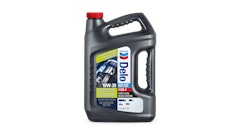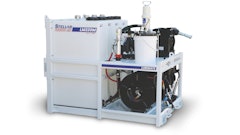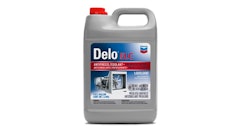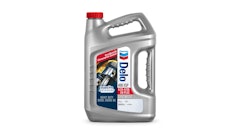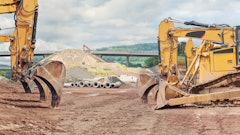These oils are engineered to protect against wear, rust and corrosion; resist oxidation to minimize sludge and varnish; improve pumpability; exhibit water-separating properties; and deliver other application- and temperature-specific qualities, according to Tony Negri, director of marketing for commercial lubricants, Phillips 66 Lubricants.
Viscosity is the single most important characteristic of any lubricant, notes Negri, and must be correct for the temperatures and pressures that will be experienced in a given application. Low-viscosity oils are typically used for high-speed operations, low-temperature applications and low-pressure loads. High-viscosity oils are optimal for slow-speed operations, high-temperature applications and high-pressure loads.
The viscosity index (VI) is a measure of the rate of change in viscosity with regard to temperature. The higher the VI, the smaller the relative change in viscosity with temperature.
This is important, he explains, because hydraulic system designers require a specific viscosity to maintain peak system performance. If the viscosity is altered by large temperature variations, as is common in spring and fall in many areas of the country, system performance could be negatively impacted, possibly leading to erratic equipment operation or unplanned downtime.
Premium, high viscosity index (HVI) hydraulic oils can better withstand such changes, he notes.
Principal considerations
To select most appropriate hydraulic oil, Negri recommends answering some fundamental questions. Does the hydraulic oil:
- Meet the pump manufacturer’s requirements? Pump manufacturers have varied criteria on minimum requirements that the hydraulic oil must meet depending on the type of pump in service.
- Have good low- and high-temperature viscometrics? The lubricant must provide the correct viscosity at a specified operating temperature to prevent metal-to-metal contact and to protect the pump.
- Have thermal stability and resistance to oxidation? The mechanical action of hydraulic components, friction and hydraulic pressure contribute to heat buildup in the hydraulic system, leading to oil degradation and sludge formation.
- Have good foam control? Air contributes to temperature increase and overheating, if not allowed to break out of the hydraulic fluid. Air bubbles may also cause an effect known as micro dieseling that leads to thermal degradation.
- Separate readily from water? Water, the most common contaminant in mobile hydraulic systems, must be separated from the oil and allowed to settle to the bottom of the reservoir before it gets carried over in circulation.
- Need to be biodegradable? When mobile equipment operates on or near lakes, rivers, dams and park areas, the use of environmentally-safe hydraulic oils (readily-biodegradable or inherently-biodegradable) is often mandated by law to minimize risks if hydraulic oil were to contact the soil or water.








